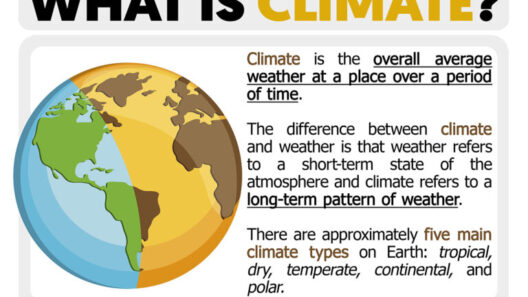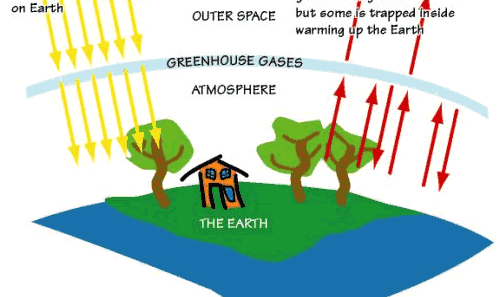Tropical forests, often referred to as rainforests, possess a unique climate characterized by high humidity, warmth, and an astonishing diversity of flora and fauna. What happens in these vital ecosystems, where lush greenery thrives and life bursts forth in an exuberant display? And how does this environment itself pose both opportunities and challenges in the context of climate change?
The climate of tropical forests is typically defined by a combination of high temperatures and ample rainfall. These regions often experience temperatures averaging between 20°C to 30°C (68°F to 86°F) throughout the year. Unlike temperate zones, tropical forests do not experience extreme seasonal temperature fluctuations. Instead, their climate is consistently warm, providing an ideal environment for biodiversity to flourish.
Humidity levels in tropical forests are generally extreme, often exceeding 80%. This humidity is a direct result of the high evaporation rates and the dynamic interactions between the dense canopy and the underlying layers of the forest. The rainforest’s ecosystem operates like a self-sustaining system, where the abundance of vegetation contributes to moisture retention, creating a microclimate that supports a myriad of life forms. But what about these life forms? How do they adapt to such extreme humidity?
In the rich tapestry of the tropical forest, countless organisms have evolved unique adaptations to thrive in this humid environment. For instance, epiphytes, such as orchids and bromeliads, grow on tree branches rather than in the soil. They have developed specialized structures to capture moisture from the air and ensure their survival. Additionally, many animals, including frogs and insects, have transformed their reproductive cycles to coincide with the rainy season, taking advantage of the abundant water sources for breeding.
Precipitation is perhaps the most significant factor influencing the climate of tropical forests. Rainfall levels can vary, with some regions receiving more than 2000 millimeters (79 inches) annually, sometimes distributed evenly throughout the year or concentrated in specific seasons. This consistent influx of water fosters an exuberant growth of vegetation, leading to the emergence of towering trees that can exceed 60 meters (197 feet) in height. Their expansive canopies create a complex structure in which a plethora of organisms, both plant and animal, can coexist.
However, this vibrant life in tropical forests faces pressing challenges. With climate change emerging as a dominant threat, alterations in rainfall patterns can lead to severe droughts or prolonged wet periods, disrupting the delicate balance that these ecosystems require. A playful question arises: can the richness of life in tropical forests evolve fast enough to withstand these rapid environmental changes? The answer remains uncertain, and the implications for biodiversity are dire.
Forests, particularly tropical ones, play a crucial role in global climate regulation. They act as carbon sinks, absorbing carbon dioxide and mitigating the effects of climate change. Nevertheless, deforestation and land-use changes threaten their existence. The expansion of agriculture, logging, and infrastructure projects not only contribute to the destruction of these vital ecosystems but also release vast amounts of stored carbon back into the atmosphere, exacerbating global warming.
The interplay of light and shadow in tropical forests plays an intriguing role in shaping their climate. The dense canopy intercepts much of the sunlight, creating a shaded environment at ground level. This leads to a cooler microclimate that supports a diverse understorey of plants, including ferns, shrubs, and young saplings. In this intricate dance of light, plants have adapted various strategies to source energy, such as climbing towards the canopy or developing broad leaves to capture as much sunlight as possible.
Flora and fauna cohabitate in a network of interdependence, relying on one another for survival. For example, many plants depend on specific animals for pollination and seed dispersal. Without the continual interaction between species, the ecological integrity of tropical forests would begin to falter. However, the escalation of unfavorable climate conditions can disrupt these relationships, threatening the very fabric of the ecosystem.
Moreover, the severity of climate change can lead to the emergence of pathogenic diseases that can affect both vulnerable animal populations and plants. As species shift their geographic ranges in response to changing climates, interactions with new pathogens may ignite outbreaks that can result in catastrophic declines in biodiversity. The question looms larger: which species will be resilient enough to adapt, and which will face extinction?
To combat these challenges, conservation efforts must be bolstered. Protecting existing tropical forests is paramount, but it is equally essential to restore degraded areas. Reforestation initiatives that focus on native species can help revive ecosystems and reestablish their critical functions. Furthermore, education and sustainable practices that promote coexistence between human activities and forest preservation can lead to a brighter future for these irreplaceable ecosystems.
Climate change not only poses significant risks to tropical forests, but it also reflects a larger narrative about our collective responsibility to preserve the planet. As stewards of nature, embracing innovation and sustainability in agriculture, forestry, and urban development can help mitigate the impacts of climate change. The urgent question remains: will we rise to the challenge and safeguard the tropics for generations to come?
In summary, the climate in tropical forests is undeniably humid, hot, and teeming with life. As we examine this vibrant ecosystem’s intricacies and the challenges it faces, it becomes clear that its future hinges on a delicate balance of preservation, adaptive resilience, and a shared commitment to fostering sustainability. As we navigate the complexities of climate change, the tropical forest may hold the key to both a warning and a hopeful solution.







